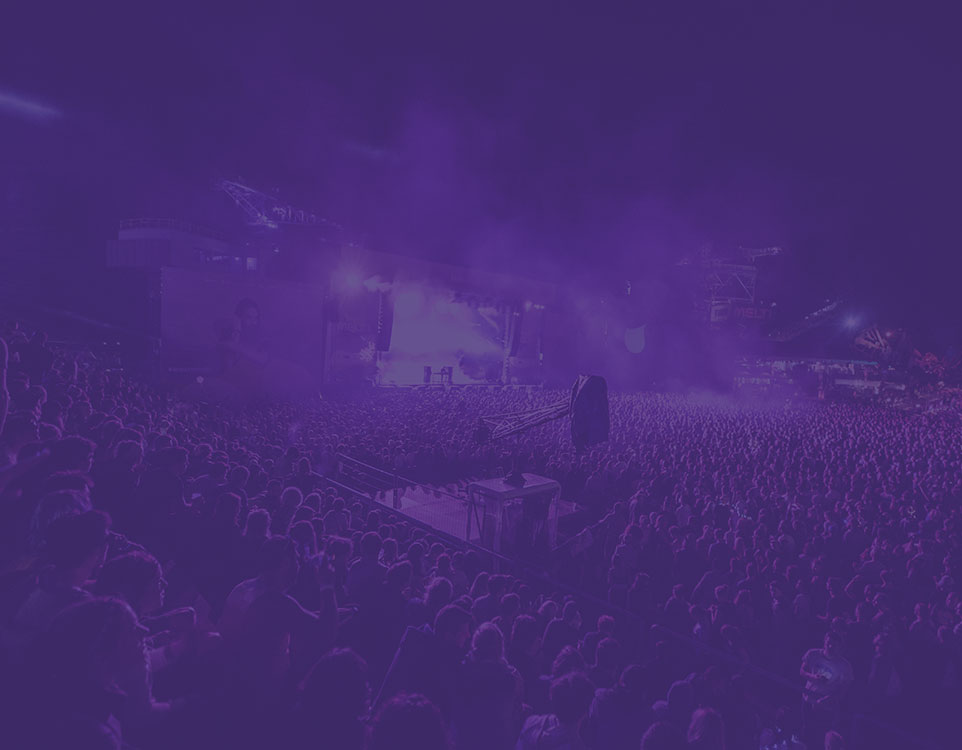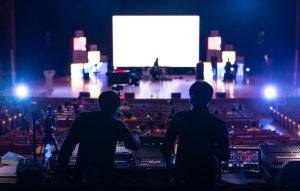A Guide to Experiential Event Planning

Looking into how to get started with experiential marketing for your events?
In today’s experience economy, simply hosting an event is no longer enough to stand out. Think about how many stalls you see at exhibitions – now try to recall any of them. The likelihood is that if you’ve been to an exhibition you’ve probably seen hundreds of stands but you can probably only call to mind a memorable few.
Attendees want to be wowed and fully immersed in an interactive, multi-sensory experience. Experiential event planning takes traditional events to the next level by creating unique, social media-worthy moments that connect emotionally with your target audience.
Whether you’re launching a new product, building brand awareness, or aiming to drive sales – crafting an experiential marketing strategy is your key to creating an extraordinary event.
This guide covers key elements and tips for how to get started with planning experiential events.
If you’d like to find out more about how Exposure Analytics can help your brand make its mark, contact our experienced team at 0203 982 0997.
Define the Goal of Your Experiential Marketing Campaign
Before you invest time and money into planning an experiential event, it’s crucial that you start by defining your goals. This will impact the direction and focus of your experiential marketing campaign hugely.
Here are some common goals that businesses hope to achieve by creating an experiential event to help start off your ideation:
- Brand awareness
- Product education
- Generating new leads
- Spreading awareness of a new product or service
Example – If you have an innovative new product that needs a higher level of customer education to understand what sets it apart from competitors, your experiential marketing strategy should focus on delivering that.
In this case, product demonstrations or workshops, executed in a fun and engaging way, would be your best bet. That’s how setting goals help you meet the right targets.
Analyse Your Audience
This is the part of building an experiential marketing campaign where you need to call upon all of your existing data about your customer.
Who are they? What demographics are they from? Which of your products or services have customers loved in the past?
Every bit of information you have about your customer helps you to get inside their psyche and understand what makes them tick. This is how you tailor the content of your experiential event to them.
Choose Your Experiential Marketing Activation
By now you should know who your customer is and what the goal is from engaging them.
This should give you a good steer on what kind of brand activation to plan for your event. Remember that creativity is your friend as the goal is to be memorable. Your experiential event marketing activities should be memorable, interactive and shareable.
Still need some ideas?
Let’s imagine a kitchenware brand who are attending a B2B trade show to try and drum up interest in their new blender. Here are some ideas for what experiential marketing should deliver to visitors if it’s embedded into their event.
- Engaging for the senses – Try to think of ways to engage touch, taste, smell and hearing as well as just simply sight. In the case of our blender brand, offering smoothie samples would showcase the product’s capabilities.
- Demonstrative – The blender brand can easily prove how much quicker and quieter their product is than the competition by putting on an informative product demonstration.
- Collaborative – Partnerships can be a great way to combine efforts and create buzz. The blender brand could collaborate with a well-known fruit brand to create limited edition signature flavour smoothies for the event.
- Interactive – Instead of just a company sales exec demonstrating the capabilities of the blender, visitors are invited to blend their own creations and take them away with them in personalised bottles. A truly memorable experience.
- Sharable – Creating an experience that prompts sharing on social media supports the goal of creating brand awareness. Our kitchenware brand could set up a point for their visitors to take photos behind a giant cardboard image of the blender to look as though they’re standing inside it. Not only is this visually arresting and humorous but it instantly prompts sharing on socials. And the kitchenware brand’s logo will be right there when it’s shared.
Measure Your Success
Let’s be real. Creating memorable experiences that stand out from the crowd comes with an enhanced price tag. However, the rewards can be well worth it.
A Statista study revealed that 91% of customers reported that they would feel more positive about a brand’s product or service after actively participating in a brand activation or experience.
This gives an idea of exactly what the size of the prize when experiential events are planned and executed well. The best way to find out how your experiential marketing campaigns are working is with event tracking.
Explore Our Revolutionary Event Tracking Tech
Need data from experiential events? Here at Exposure Analytics, our talented team have spent years creating event tracking technology to help our customers harness metrics from events like exhibitions and trade shows.
After all – measuring your engagement will help you to understand the performance of your experiential marketing and optimise it further. Having accurate data is the key to really understanding how your customers tick and how your efforts are performing.
Here’s an intro to our event tracking technology that we’ve spent decades developing and refining and what it could do for you.
- EX Sensors: By using WiFi signals, EX Sensors capture vital data directly from users themselves. This gives metrics like dwell times, engagement rates, footfall, flow routes, and heat maps. These sensors are simple to install and use in event spaces.
- Apex: If you want to track people within a defined space, such as entry and exit points, our Apex monitor is the technology for you. Find out occupancy rates and engagement to find out your high traffic areas.
- Dashboard: Track all of your vital metrics using our reporting software. Our event engagement Dashboard offers real-time insights and reports in a user-friendly format. This smart tracking system captures and displays all of the metrics from your experiential event after and even during ongoing events.
Start Tracking Your Experiential Marketing Campaigns Today
We’ve helped our clients accurately track footfall analytics and other crucial customer metrics at over 5000 events. We’re ready and waiting to help you gain valuable insights for yours.
Get an inside look at exactly how we measure immersive experiences for clients or take a look at our FAQ section for answers to common questions about our event tracking technology.
To start tracking your experiential marketing, speak to our expert team, or call us on 0203 982 0997.


